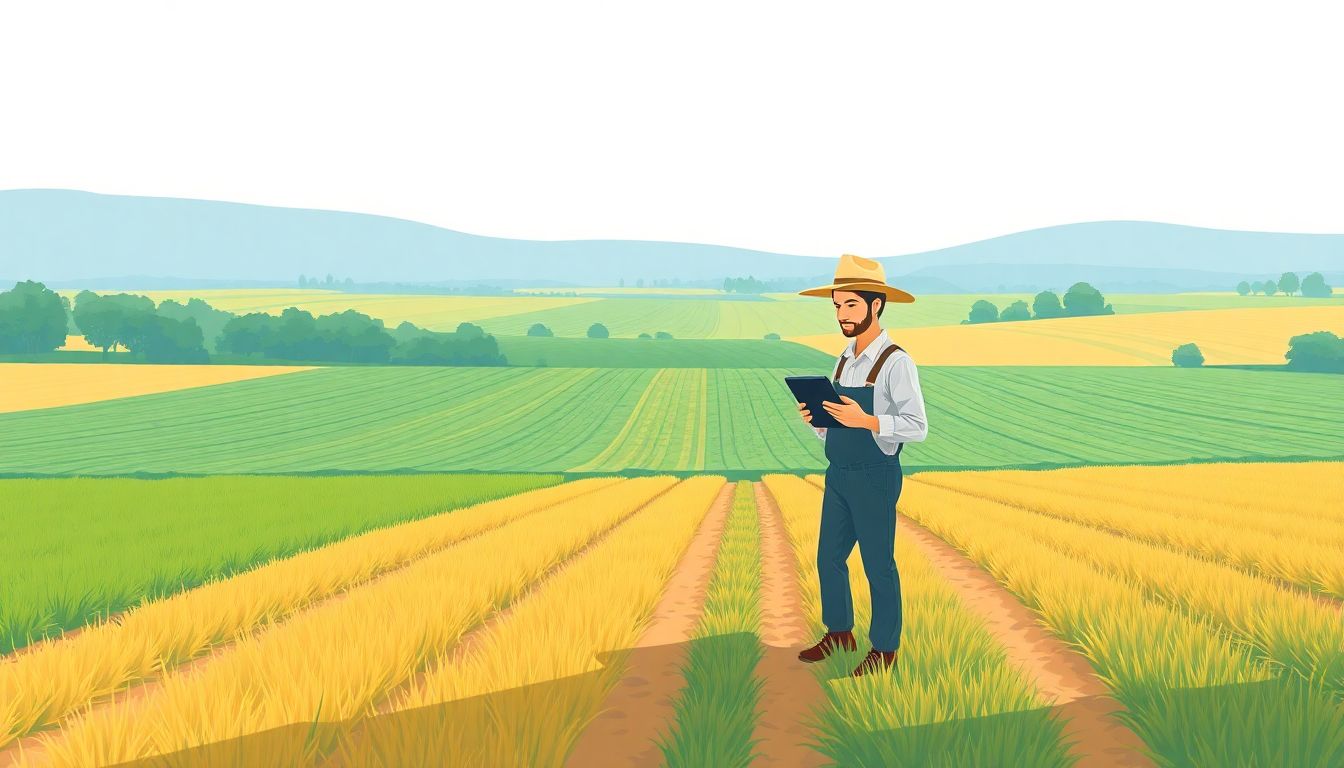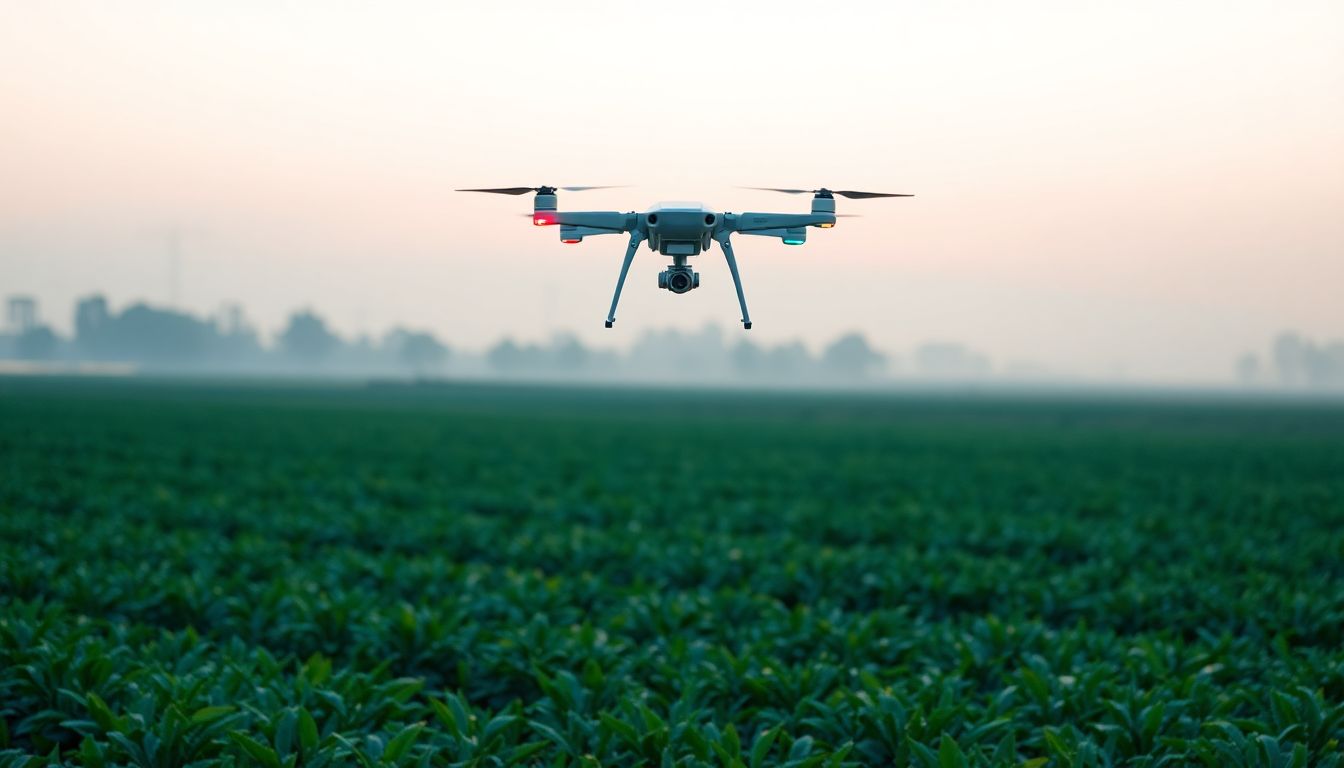Many farmers feel overwhelmed by the amount of technology available today, especially when it comes to managing their crops and livestock. It’s understandable — finding the right tools can be a hassle, and not all apps are helpful. But don’t worry, there’s good news: AI agriculture apps are making farming easier, smarter, and more efficient.
If you keep reading, you’ll see how these apps can boost your farm’s productivity and help you farm sustainably. I’ll also share tips on picking the best app for your needs so you can make farming less stressful and more rewarding.
Here’s a quick look at what’s coming: we’ll explore top AI apps for 2025, their main features, and the trends shaping their future. Plus, I’ll give simple advice for choosing the right tools to keep your farm ahead of the game.
Key Takeaways
Key Takeaways
- AI agriculture apps make farming smarter by helping monitor crops, spot diseases early, and predict yields, saving time and resources. They also support sustainable practices like targeted watering and precise fertilizer use.
- Top apps in 2025 include tools that analyze satellite images, detect pests and diseases, and provide real-time data. They are becoming essential as more farmers adopt AI for higher productivity and eco-friendliness.
- These apps improve farm output by increasing crop yields, reducing waste, and cutting costs. They help prevent crop losses and create opportunities for higher profits while promoting sustainable farming.
- AI is changing farming methods, enabling use of targeted treatments, real-time decision making, and automation of tasks like watering, spraying, and monitoring, making farming less guesswork and more precise.
- Future trends include better device integration, user-friendly mobile apps, and affordable open-source AI tools, making smart farming accessible to all sizes of farms as interest continues to grow.
- Choose AI apps based on your needs, compatibility, accuracy, and ease of use. Reading reviews and understanding support options can help you pick tools that deliver value and last longer.
- Using AI apps is becoming a must for farmers wanting to stay competitive, cut costs, and farm sustainably. They often offer quick ROI and help catch problems early, reducing crop losses and increasing profits.

1. Best AI Agriculture Apps for Farming in 2025
Looking for the top AI applications to boost your farm’s efficiency in 2025? These apps are shaping the future of farming by using artificial intelligence to monitor crops, predict yields, and spot diseases early. Because the AI in agriculture market is projected to reach around USD 5 billion this year, it’s clear that more farmers are turning to smart tools for help.
Apps like Agri AI: Smart Farming Advisor provide real-time insights based on data from sensors and satellite images. They can tell you when to water, fertilize, or harvest, saving time and resources. Agro.IA uses AI-powered image analysis to detect crop diseases from photos, so you catch problems before they spread. Additionally, Farmonaut offers satellite-based crop health monitoring, helping you make better decisions without even stepping outside.
Other notable solutions include drone surveillance apps that provide aerial views and data analysis, making large-scale farm management more precise than ever. As AI adoption keeps growing—with 80% of agribusinesses recognizing its benefits—these apps are becoming indispensable for farmers aiming for higher yields and sustainability.
2. Core Features of AI Apps That Help Farmers Today
The main features that make AI apps a game changer for farmers include real-time data analysis, disease detection, precision resource management, and yield prediction. These tools harness big data, satellite imagery, and sensor inputs to provide actionable insights. For example, AI models can analyze plant images to identify diseases with over 99.8% accuracy, allowing for quicker intervention.
Another key feature is smart irrigation advice, which optimizes water use by considering weather forecasts and soil moisture levels. Fertilizer application is also more accurate, reducing waste and environmental impact. Many apps incorporate user-friendly dashboards, making complex data accessible even if you’re not a tech genius.
If you want to get the most out of your farming tech, stick to apps that integrate multiple features—like pest monitoring combined with weather prediction—to help you plan better. As adoption continues to grow, these features will be standard in nearly every successful farm operation.
3. How Leading AI Apps Improve Farm Productivity and Sustainability
The best AI apps don’t just help farmers work faster—they make farming more sustainable too. Many apps enable precise use of water, fertilizer, and pesticides, reducing waste and lowering costs. For example, AI-powered irrigation systems can cut water usage by 80%, which is a big win for both the environment and your wallet.
By detecting diseases early through high-accuracy imaging and sensor data, these apps help prevent crop losses—sometimes reducing pest damages by over 50%. That means farmers can harvest more with fewer inputs, making the whole process more eco-friendly.
Farmers using AI apps report crop yield increases of up to 25%, and smaller farms see a 120% return on investment, proving that smarter tech pays off. Plus, adopting these apps aligns with global goals for sustainable farming—feeding a growing population without depleting natural resources. If you’re looking to make your farm more productive and green in 2025, investing in top AI tools is a smart move.

4. Ways AI Agriculture Apps Change Farming Practices
AI apps are reshaping how we farm, making practices more precise and less guesswork-driven.
One noticeable change is the shift from broad spray methods to targeted pesticide and fertilizer application, which saves resources and reduces environmental harm.
For example, farmers can now use AI-powered drone images to spot pest infestations early and treat only the affected areas instead of blanket spraying everyone’s crop.
This approach not only saves money but also prevents buildup of chemicals in the soil and water.
Another big change is how real-time data influences daily decisions, like when to irrigate or harvest, based on sensors and weather models.
Rather than sticking to fixed schedules, farmers adapt their routines to actual conditions, which improves yields and reduces waste.
AI also encourages a move towards less labor-intensive farming by automating tasks like seeding, weed removal, and crop monitoring with robots and autonomous vehicles.
To make the most of these shifts, start experimenting with integrated AI tools on a small scale before expanding, so you learn what works best for your land and crops.
Overall, these changes help farmers work smarter, not harder — and that’s a good thing in today’s tight-margin world.
5. Trends Shaping AI Agriculture Apps in 2025
Looking ahead, certain trends are making AI apps more accessible and valuable for farmers everywhere.
First up, integration with IoT devices is becoming standard, connecting sensors, drones, and farm equipment into one smart system.
This allows continuous monitoring of crop health, soil moisture, and weather, giving farmers a full picture without constant field visits.
Second, machine learning models are getting better at predicting yields and detecting issues before they happen, thanks to access to bigger, more diverse datasets.
Plus, we see AI apps becoming more user-friendly, with simplified interfaces and mobile apps so even small farms without dedicated tech teams can benefit.
The market’s growth — projected to reach $4.7 billion by 2028 with a CAGR of 23.1% — indicates these trends will accelerate quickly.
Another trend is the rise of open-source AI tools, making cutting-edge tech available to more farmers on tighter budgets.
Finally, consumer demand for sustainably produced food is pushing farms to adopt AI solutions that improve transparency and eco-friendliness.
If you want to keep up, try testing different apps and stay informed about new AI tools cropping up in agricultural tech shows and conferences.
6. Tips for Choosing the Right AI Farm Apps
Picking the right AI tools isn’t just about fancy features — it’s about finding what fits your farm best.
Start by assessing your specific needs: do you want better pest detection, more efficient irrigation, or yield forecasting?
Next, check if the app integrates well with your existing equipment and sensor systems, saving you the headache of compatibility issues.
Look for apps with proven accuracy — like those with 99.8% reliability in disease detection — to avoid false alarms or missed problems.
Read reviews and case studies from farms similar to yours; real-world feedback helps gauge effectiveness.
Don’t forget to consider ease of use; apps with intuitive dashboards save you time and frustration.
Some excellent options include Agri AI: Smart Farming Advisor and Farmobile, which are popular for their user-friendly designs and reliable data.
Finally, think about the support and updates provided by the company: regular improvements and good customer service can make your investment last longer.
Choosing wisely now sets your farm up to get maximum value from these smart tools in the years ahead.
7. Why AI Apps Are a Must-Have for Farms in 2025
If your farm isn’t using AI apps yet, you might be leaving money and time on the table.
With crop yields increasing by 25% and pest losses dropping over 50%, it’s clear AI is changing the game.
Smart irrigation, fertilizer management, and disease detection help streamline your operations, saving you money and reducing environmental impact.
And since farmers are seeing a 120% ROI on small farms and even more on larger ones, these apps aren’t just nice-to-haves—they’re essentials.
In fact, 80% of agribusinesses recognize AI’s benefits, even if only about 20% fully implement it yet, which means there’s still room for more farms to jump in.
Real-time satellite and sensor data also mean you can catch issues early, avoiding costly crop failures and making better decisions on the fly.
Because consumer support for AI-enhanced farming is growing strong, adopting these tools now can boost your farm’s reputation and marketability.
Bottom line: if you want your farm to stay competitive, sustainable, and profitable in 2025, investing in AI tools isn’t just smart — it’s necessary.
FAQs
In 2025, top AI agriculture apps include tools for crop monitoring, weather prediction, soil analysis, and farm management, helping farmers optimize yields and reduce costs.
AI farming apps typically include features like real-time data analysis, disease detection, irrigation control, and predictive analytics to support decision-making.
They enhance productivity by optimizing resource use, reducing waste, and providing actionable insights, which also supports sustainable farming practices.
These apps introduce precision farming, automate routine tasks, and enable better resource management, making farming more efficient and adaptive to changing conditions.